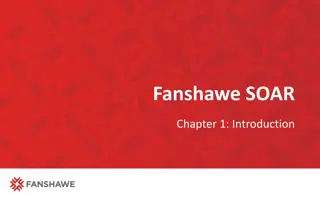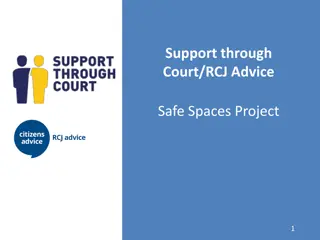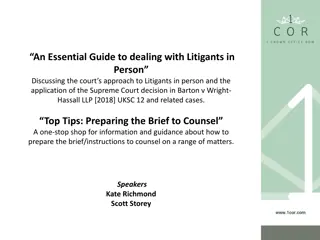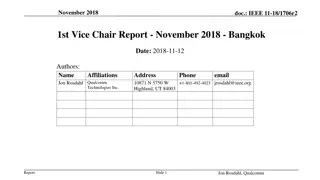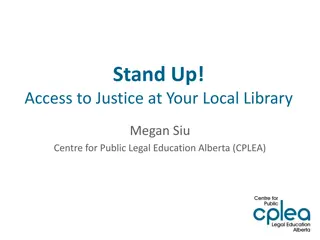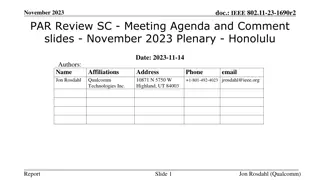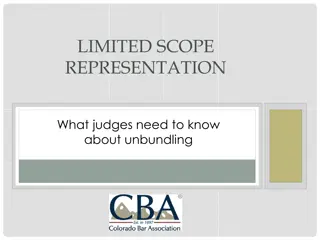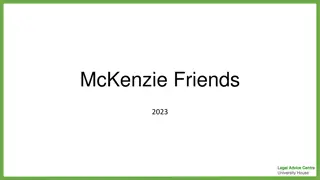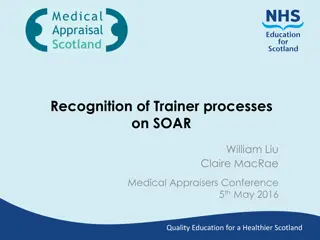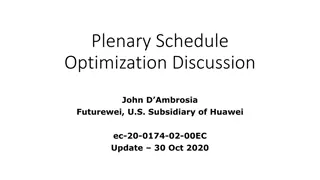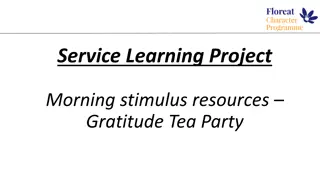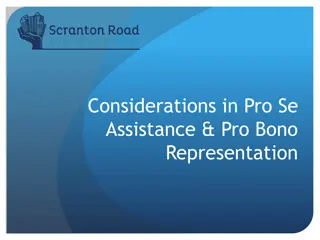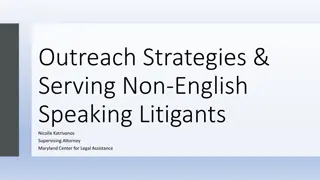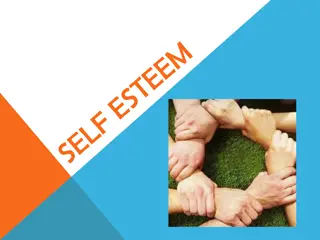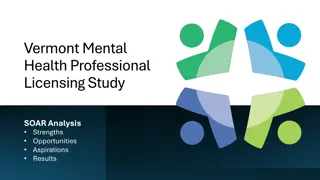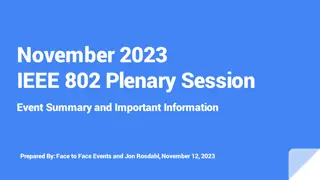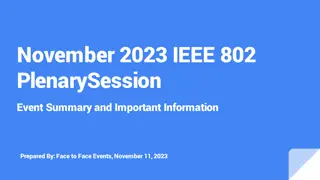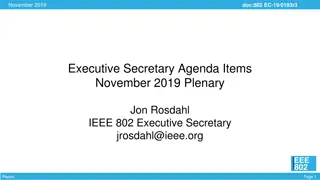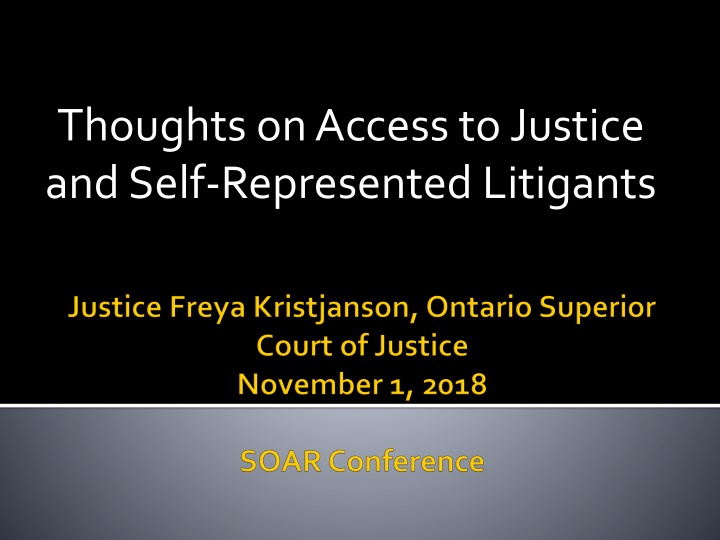
Access to Justice for Self-Represented Litigants
Explore the challenges faced by self-represented litigants in accessing justice, including obstacles such as legal system orientation, lack of procedural awareness, and issues with evidence presentation. Learn about the importance of focusing on vulnerable groups and the responsibilities of judges in supporting self-represented individuals in the legal process.
Download Presentation

Please find below an Image/Link to download the presentation.
The content on the website is provided AS IS for your information and personal use only. It may not be sold, licensed, or shared on other websites without obtaining consent from the author. If you encounter any issues during the download, it is possible that the publisher has removed the file from their server.
You are allowed to download the files provided on this website for personal or commercial use, subject to the condition that they are used lawfully. All files are the property of their respective owners.
The content on the website is provided AS IS for your information and personal use only. It may not be sold, licensed, or shared on other websites without obtaining consent from the author.
E N D
Presentation Transcript
Thoughts on Access to Justice and Self-Represented Litigants
The views expressed in this presentation are my own, and should not be attributed to other members of the judiciary or the Court. 2
Challenges for SRLs Canadian Judicial Council Statement of Principles Active Adjudication Pre-Hearing and Hearing Techniques 3
The focus must be on the people who need to use the system. This focus must include all people, especially members of immigrant, aboriginal and rural populations and other vulnerable groups. Litigants, and particularly self-represented litigants, are not, as they are too often seen, an inconvenience; they are why the system exists. - Current Gaps in Access to Justice The Problem from Access to Civil and Family Justice: A Roadmap for Change, October 2013, Action Committee on Access to Justice in Civil and Family Matters, Ottawa, Canada, October, 2013, 4
The specific obstacles SRLs face range broadly, but can include: (i) struggling to orient themselves in the legal system, including understanding terms of art or legal jargon; (ii) lack of awareness of procedural rights and when to assert these rights or fulfil procedural obligations; (iii) misunderstanding different forms of proceeding and the consequences of their choice 5
The specific obstacles SRLs can include: (iv) failing to understand the requirement to adduce evidence or seeking to do so in an inadmissible or irregular manner; or (v) putting forward far more evidence than necessary, unnecessarily prolonging the length of the hearing or trial 6
Language Disability including mental health issues Family Law Emotions re other spouse Financial disparities Other side represented no level playing field Small percentage not dealt with here vexatious litigants 7
1. Judges have a responsibility to inquire whether self-represented persons are aware of their procedural options, and to direct them to available information if they are not. Depending on the circumstances and nature of the case, judges may explain the relevant law in the case and its implications, before the self-represented person makes critical choices. 8
2. In appropriate circumstances, judges should consider providing self-represented persons with information to assist them in understanding and asserting their rights, or to raise arguments before the court. The Principles also state that a judge may provide information about the law 9
[W]e take it as a matter of course that a judge should be a mere umpire, to pass upon objections and hold counsel to the rules of the game, and that the parties should fight out their own game in their own way without judicial interference. - Roscoe Pound, The Causes of Popular Dissatisfaction With the Administration of Justice, 14 Am. Law. 445 (1906) at 447 10
Robust Pre-Hearing Case Management Settlement case conferences Control in a Hearing Two SRL s or One SRL, one represented party Tribunals Rules (Courts more limited) 11
Explain legal and procedural issues in plain language and in writing Record requirements in writing on endorsement that refers clearly to Rules, deadlines, etc. Explain what evidence is what courts look at Refer to court resources, also write out websites for CLEO (Community Legal Education Ontario), Pro Bono Ontario, CanLII 12
They are treated with respect They have an opportunity to tell their story They understand what is going on The judge (adjudicator) is trying to be fair vs. How judges and lawyers assess fairness was the correct law applied; were proper legal procedures followed; is outcome legally correct. Wardle Daley Bernstein Bieber LLP 13
General techniques Will discuss 1. Early explanation 2. Emphasize facts and law 3. Explain decisions/rulings Wardle Daley Bernstein Bieber LLP 14
Opening remarks set the stage Issues, legal requirements, procedure Early framing of issues, description of process Explain order, role of parties, time limits, adjudicator may ask questions (the reason for questions, what question don t mean) Wardle Daley Bernstein Bieber LLP 15
Establish that the adjudicator is in charge Tone from the top: respect Manage expectations Focus on relevant issues, good use of time Groundwork for later procedural rulings Wardle Daley Bernstein Bieber LLP 16
Distribute SRL guide; read it aloud; mark as Exhibit, ask if there are questions Sometimes I will draft in advance a list of the issues based on the pleadings and ask parties to fill it out so I understand their positions on each issue Generally, no opening statement if SRL I will ask, when SRL is almost done, to go back to the Issue list and make sure they ve called all evidence on all the issues 17
Distribute and discuss key statutory provisions at outset (if they are binding e.g., custody, best interests of the child; relevant Income Tax Act provisions for income) Distribute and discuss binding or leading case 18
Adjudicators need facts necessary for decision on the merits Explain the purpose of questions and interventions Explain what the law requires Explain why certain facts/information are necessary/important Explain why facts are irrelevant or may not be considered Engagement in fact-finding process/probing for detail? Wardle Daley Bernstein Bieber LLP 19
Perceptions of fairness depend on whether litigant understands what is going on Understanding the reason for and effect of procedural and evidentiary rulings important Wardle Daley Bernstein Bieber LLP 20
Go back to issues list (or distribute a new issues list) Explain burden of proof Explain requirement to rely on evidence in the court only Review key cases/statutory provisions Ask questions of each side Explain when and how you ll release decision (e.g., by e-mail) 21
Objections: SRLs often dont object. If parties are introducing hearsay, I will stop and explain why that is not helpful to the court and probably not admissible. I will always stop My lawyer told me and explain solicitor-client privilege. Where repetitive, I tell them they ve covered that and its in my notes, ask if there is anything else on point X, and they should move to point Y 22
Same techniques (neutral engagement, Early explanation, Emphasize facts and law, Explain decisions/rulings) A good lawyer understands that this will make process more efficient and more fair Explaining helps the represented party understand the purpose of judge s intervention Concern don t seem to help one side 23
Thank you 24

